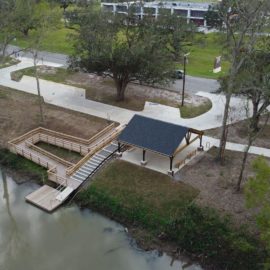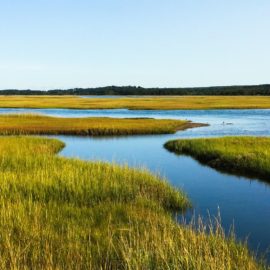
Our coastal ridges, the backbones of the marshes are disappearing. Maybe a fix can be found in a grant Nicholls College received.
Louisiana’s network of natural ridges serves as the backbone of coastal marshes, helping them resist wind and waves from storms. But the ridges, built by river silt and sand during floods and often topped with oaks and other trees, have been disappearing as the state’s coast rapidly sinks and erodes. Now Nicholls State University in Thibodaux will receive almost $500,000 to study the role that low, wooded ridges play in helping to hold together the fragile coast. The grant, funded with penalties from the 2010 Deepwater Horizon oil disaster, was awarded by the state Coastal Protection Authority and The Water Institute of the Gulf. It will help Nicholls researchers to delve into the ecological attributes of ridges and figure out the best ways to incorporate them into the authority’s coastal restoration projects.
nola.com
The ridges are vulnerable to salt water that erodes their roots.
Ridges often begin to unravel when saltwater seeps in, killing the tree roots that hold them together. With ridges out of the way, marshes erode more quickly and hurricanes strike deeper inland. “Our understanding of how ridges function and the ecological and sociological communities they support is limited,” Nicholls biologist Jonathan Willis said. “By resolving targeted data gaps and providing conceptual models of ridge function, we can facilitate planning for coastal ridge restoration projects.” A few ridges have been restored near Port Fourchon and other spots along the coast.
With these restorations, Nicholls College has some ideas already which should make the grant worth more as the will expand knowledge rather than start from scratch.
Nicholls researchers will study ridges and similar human-made structures in the estuaries of Barataria and Terrebonne bays. Faculty and students from several departments, including biology, history and geography, will contribute to the research, which will include field surveys, drone imaging, laboratory work and community interviews. The grant is worth $495,368. The research will start this fall and continue through 2023.
What Nicholls finds will be able to help the whole lower part of Louisiana enabling others to work on the marshes in their area.



